Finding job candidates for your open roles can be easier said than done. Gone are the days (mostly) of creating a simple job ad to then sit back and watch as the applications flood in. In today’s competitive job market, there’s quite a bit more to it (#IYKYK).
Evaluating job candidates is the next tricky bit. Once you’ve found them, you’ll need to assess who has the goods and who isn’t worth your time. How, you ask?
There’s a whole rainbow of methods you can use. Today, we’re going to show you our top 15 evaluation tactics. Everything from automated resume screening to our personal favorite, skills testing.
Let’s dive in!
TL;DR – Key Takeaways
- There are many ways to evaluate job candidates, so whether you’re looking for inspiration or switching up your current evaluation methods, we have 15 tactics for you to consider.
- Our top tips for shortlisting candidates early on include automating your resume screening process, asking qualifying questions in the application form, and replacing the cover letter with skills tests.
- To streamline the interview and screening process, have your ideal candidate profile ready, keep your interviews structured, and avoid running them 1:1.
- Soft skills tests, take-home tasks, and asynchronous interviews each help provide you with more information about the candidate beyond traditional methods like CVs and phone interviews.
- When it comes to making a selection between the final few, peer interviews, paid trial projects, and cultural add interviews go a long way towards reducing bias when shortlisting and selecting the best candidate for the job.
Early candidate evaluation process: how to optimize candidate pre-screening
It’s important to get things right from the very beginning, as that’s typically when you’ll have the largest number of applicants to narrow down.
Also, there’s a good chance that most of those who hit “Apply” are not a good fit for the job—making it necessary to remove them from the equation quickly and efficiently, so you can spend more time assessing only the most qualified candidates.
Here are a few ways to do that and get to the top performers – not just those excited about the salary expectations.
#1 – Automate your resume screening
Most good applicant tracking systems and HR apps nowadays come with the feature of automated resume screening. As the candidates apply, the app runs the resume through a keyword analysis to see if they have the necessary qualifications, relevant previous job titles, and the right skills.
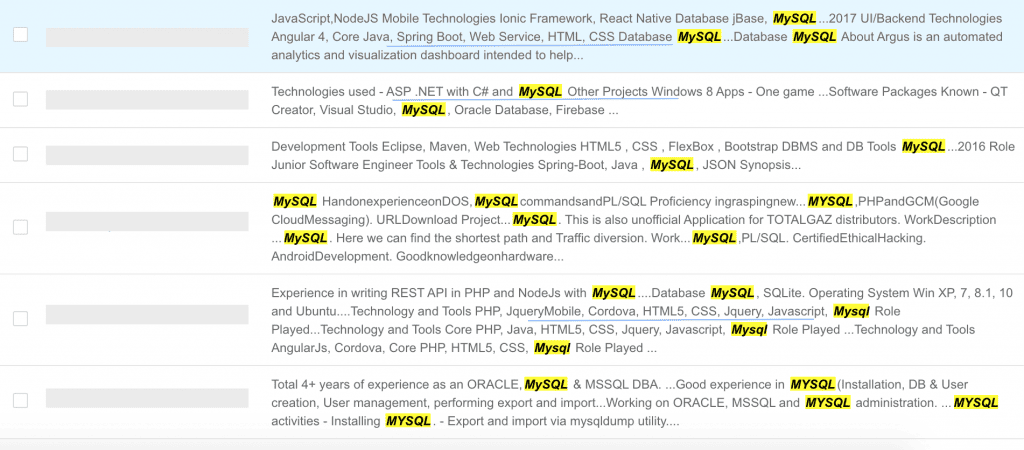
Bear in mind that the reliability of these tools has declined as candidates got more savvy to this type of tool. Resumes can be easily doctored or plain fabricated, while some candidates can have amazing skills and potential, but just not use the right keywords.

#2 – Ask qualifying questions in the application form
Sometimes, just asking a simple question can do wonders for your hiring process. As a part of your application, ask applicants questions such as:
- Do you have X years of experience in X?
- Have you worked with [your industry] companies before?
- Have you worked with customer support tool Y before?
- Do you have the legal right to work in [your country]?
You can set up your favorite hiring tool in a way to disqualify candidates that do not provide the appropriate answers.
#3 – Don’t ask for a cover letter
Despite their past popularity, cover letters are losing favor with today’s recruiters: they are time-consuming and not a good predictor of job success. Plus, AI is here, so who’s really writing them?
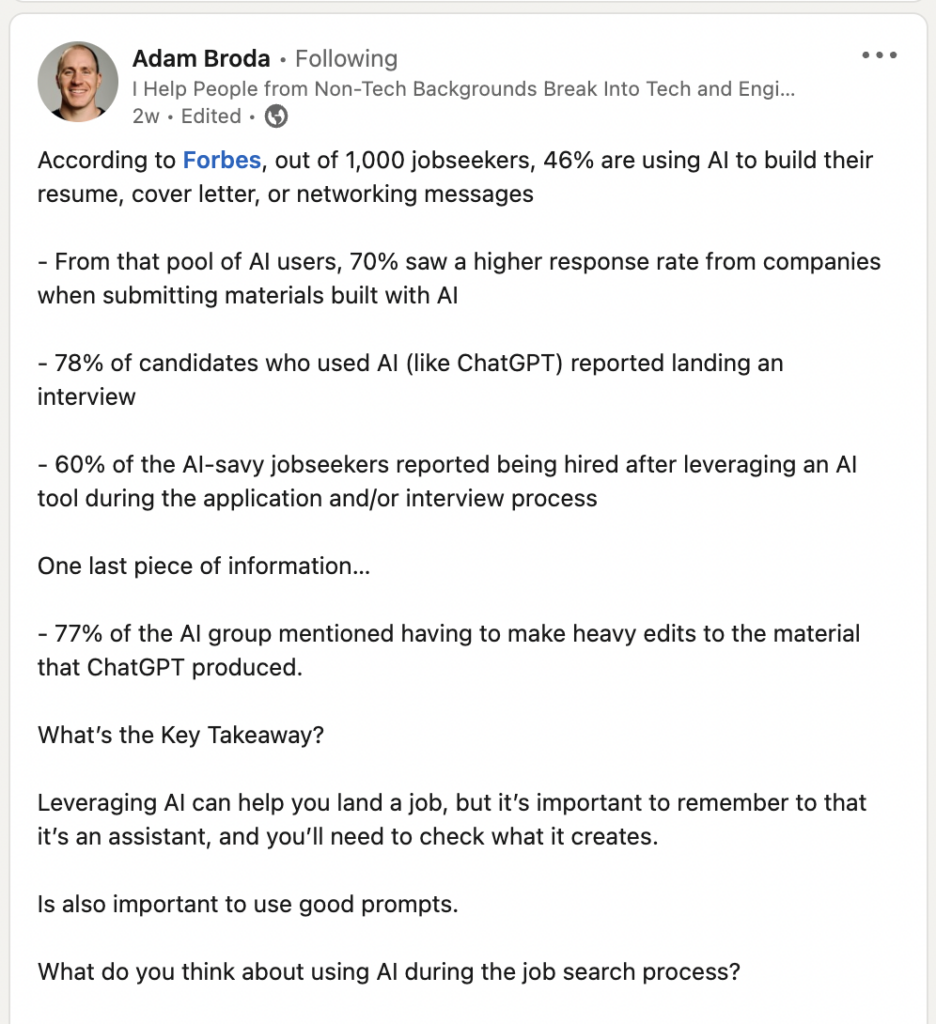
Instead of a cover letter, give candidates a quiz or skills test that they can take. Not only is it faster than reviewing an entire book’s worth of cover letters, but it’s also a chance for prospective candidates to let their skills shine.
Lowering the barrier to application for job seekers can result in a more diverse talent pool.
One of the best things about using pre-built skills tests is that you can roll them out with minimal effort. Whether you’re looking to hire a developer, or a customer support representative or test a candidate’s soft skills, you can find a ready-made test template and get screening.
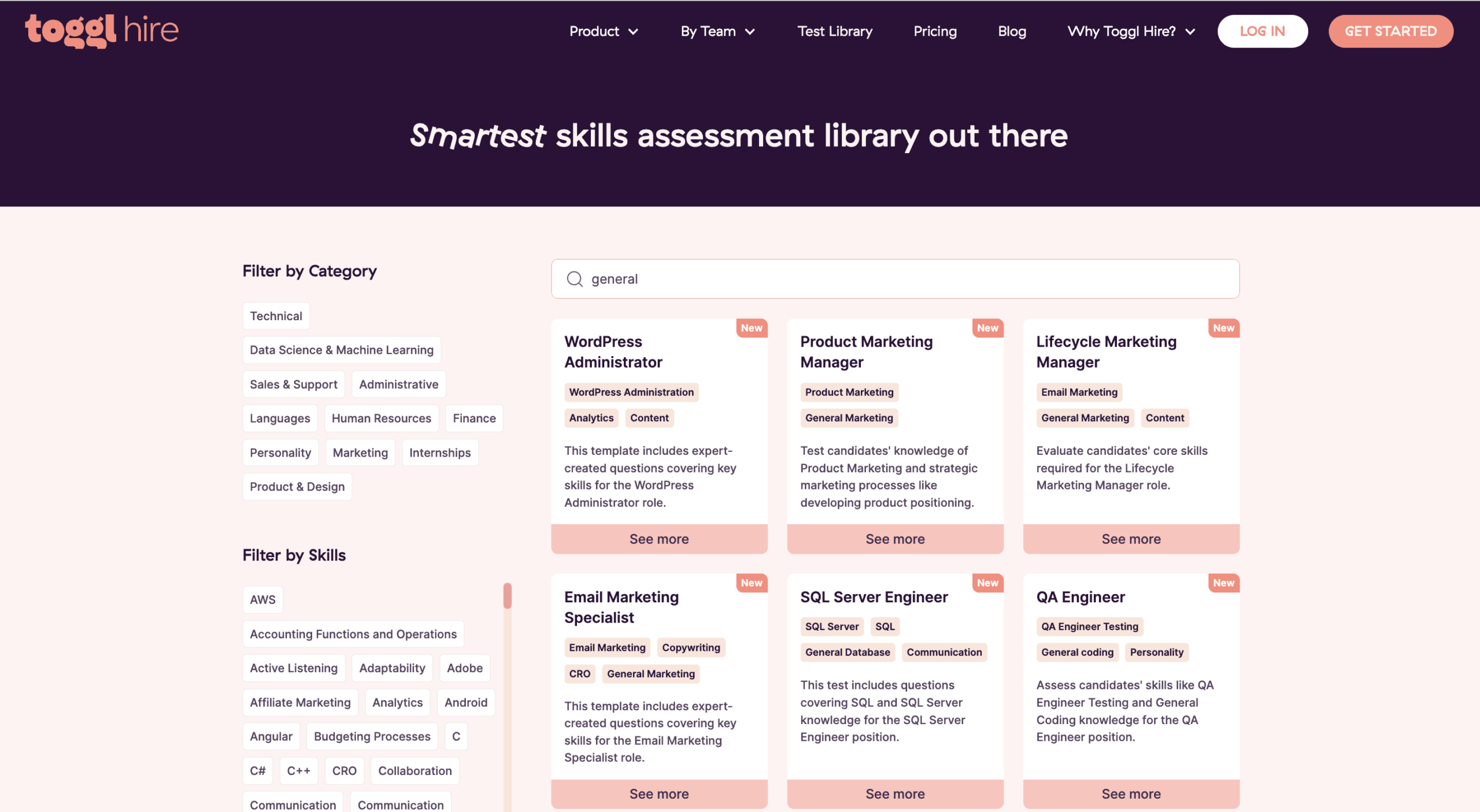
#4 – Swap phone screening for asynchronous interviews
A common first-touch candidate evaluation method is a quick phone call. While this is a decent method of evaluating candidates, it is rather clunky and time-consuming if you have a lot of candidates to talk to.
A better alternative is to invite the candidate to pre-record a video intro (also known as an asynchronous video interview). There are several reasons why this is better than phone calls, as it allows hiring managers to:
- Check their body language and the way they present themselves.
- Standardize the process by giving the same set of questions and instructions to all candidates.
- Review the videos all together – and when most convenient.
- Rewatch the videos as many times as needed.
- Easily assess candidates’ proficiency in the required language.
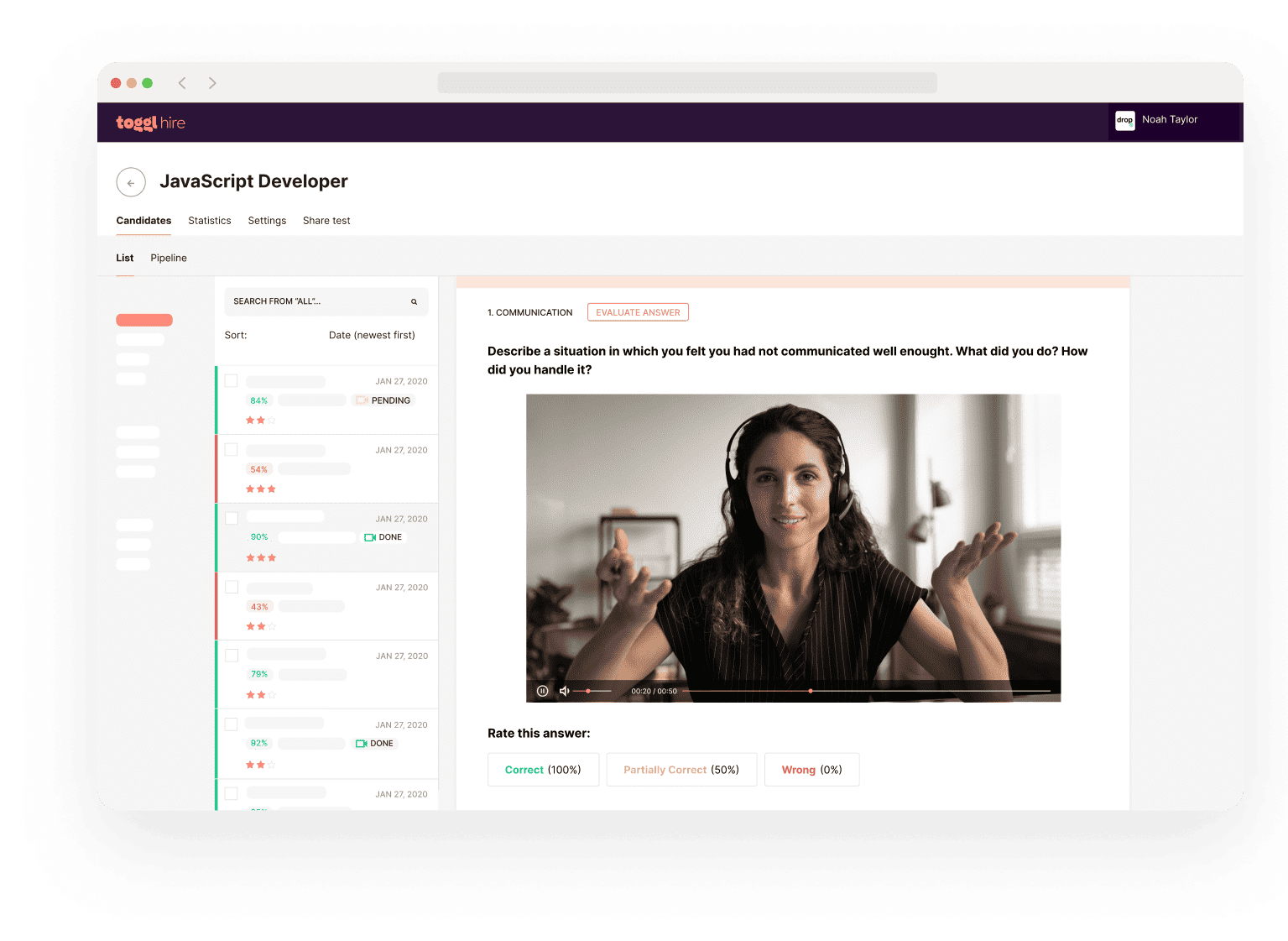
#5 – Follow best practices of social media screening
This way of evaluating candidates does not work for all roles and candidates. However, for specific cases (such as social media managers), you might decide to check out their social media profiles.
If you are planning to go down the social media screening road, you should beware of common social media screening pitfalls – both legal and ethical – and also the best practices to follow.
For example, you’ll need a social media screening policy and shouldn’t use this HR tool as the first step in your recruitment process.
Tip! You can apply the same method of candidate evaluation with developers and check out their StackOverflow profile.
Streamlining the screening and interview process
The screening and interview parts of the hiring process can take weeks at a time.
To make sure the best candidates don’t get away and to streamline the process, make sure to do the following:
#6 – Know who you’re after
Blind hiring is on the rise, but that merely means removing personal information like gender and home address from consideration, not blindly setting out to fill a role!
To help know who you’re after, prepare an ideal candidate profile before the interviews start. That way, you’ll have a checklist you can go through to see if the candidate is not just a great performer but also a great fit for your team.
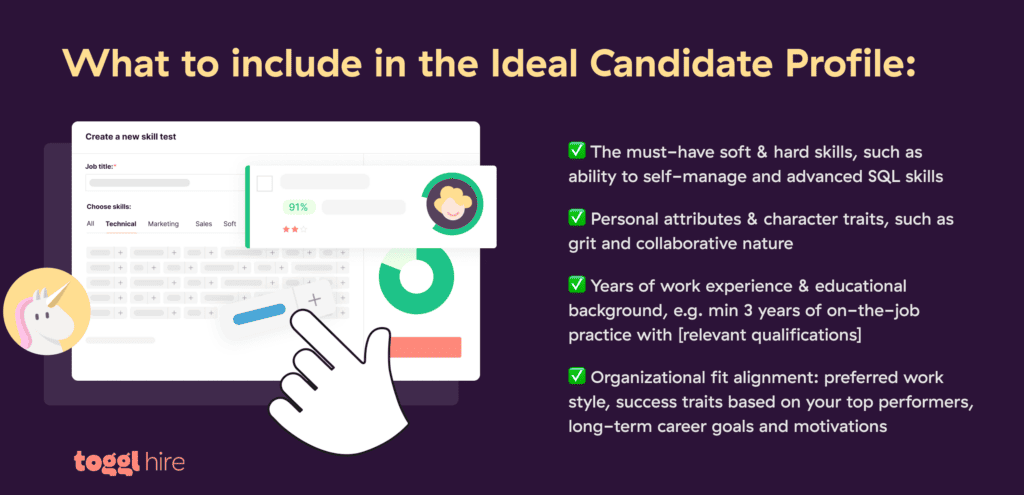
#7 – Use structured interviews in the candidate evaluation process
Make sure that every candidate you talk to gets the same set of questions so you can reduce bias and have the same standards for all candidates.
Take lots of notes and score candidates with defined criteria in your candidate scorecard. Your ideal candidate should be pretty easy to spot from your interview scorecard.
#8 – Avoid 1:1 interviews as they can lead to biased decisions
Interview candidates through panel interviews with more than one person attending from the company side.
When the interview is done, debrief asynchronously so that the interviewers don’t influence each other’s decisions. For example, you can use Google forms to collect feedback.
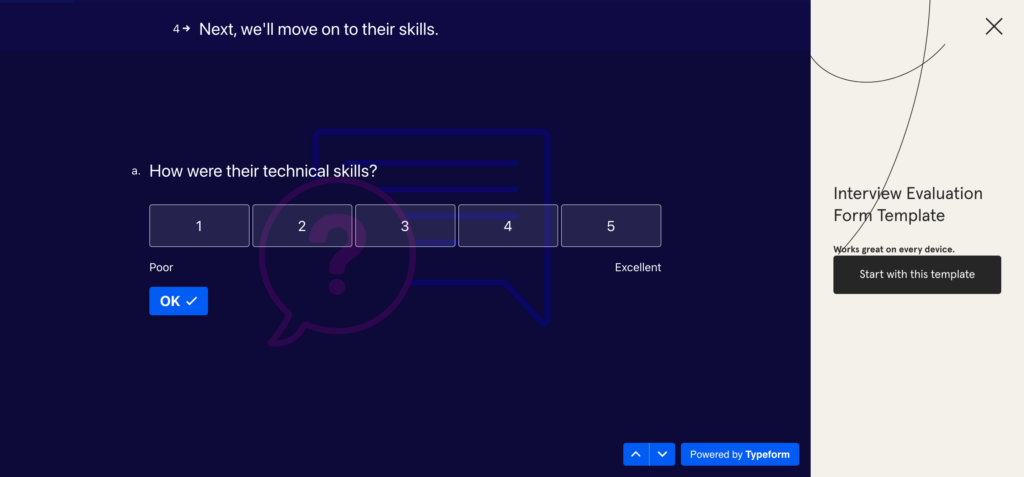
#9 – Guide your interviews with skills assessment scores
A great way to enrich your interviews with more context is to use skills test results to highlight candidates’ strengths and weaknesses.
Diving into their job-specific skill set, work preferences, and broader competencies will help you prepare the right questions. So when the interview time comes, you can confirm or disprove the test results from the candidate evaluation process.
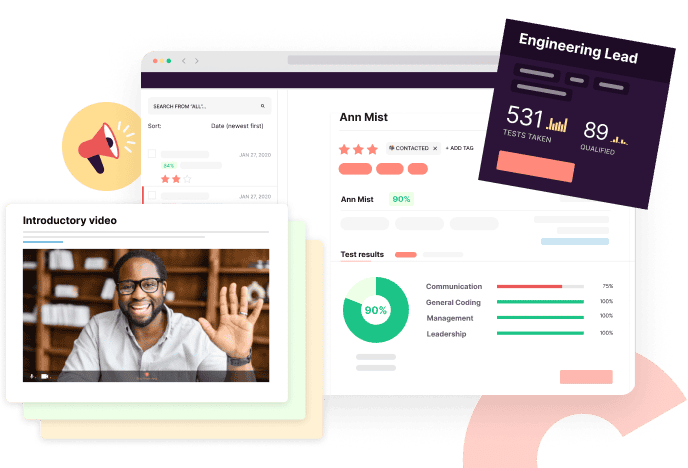
When evaluating interview candidates, we usually start by discussing the candidate’s performance in the skills test. That way, the candidate describes their thought process behind the results and helps us make smarter hiring decisions.
Shortlist candidates based on ability and job-success potential
As you progress through the hiring process, you’ll want to create a shortlist of only the best candidates. That way, you won’t waste time evaluating candidates who won’t make for a great hire.
#10 – Introduce homework assignments
Test the candidate’s ability to do the job by giving them a quick task that they can complete at home. This is usually something that can be done in a couple of hours of time, and ideally, if possible, should be a paid task.
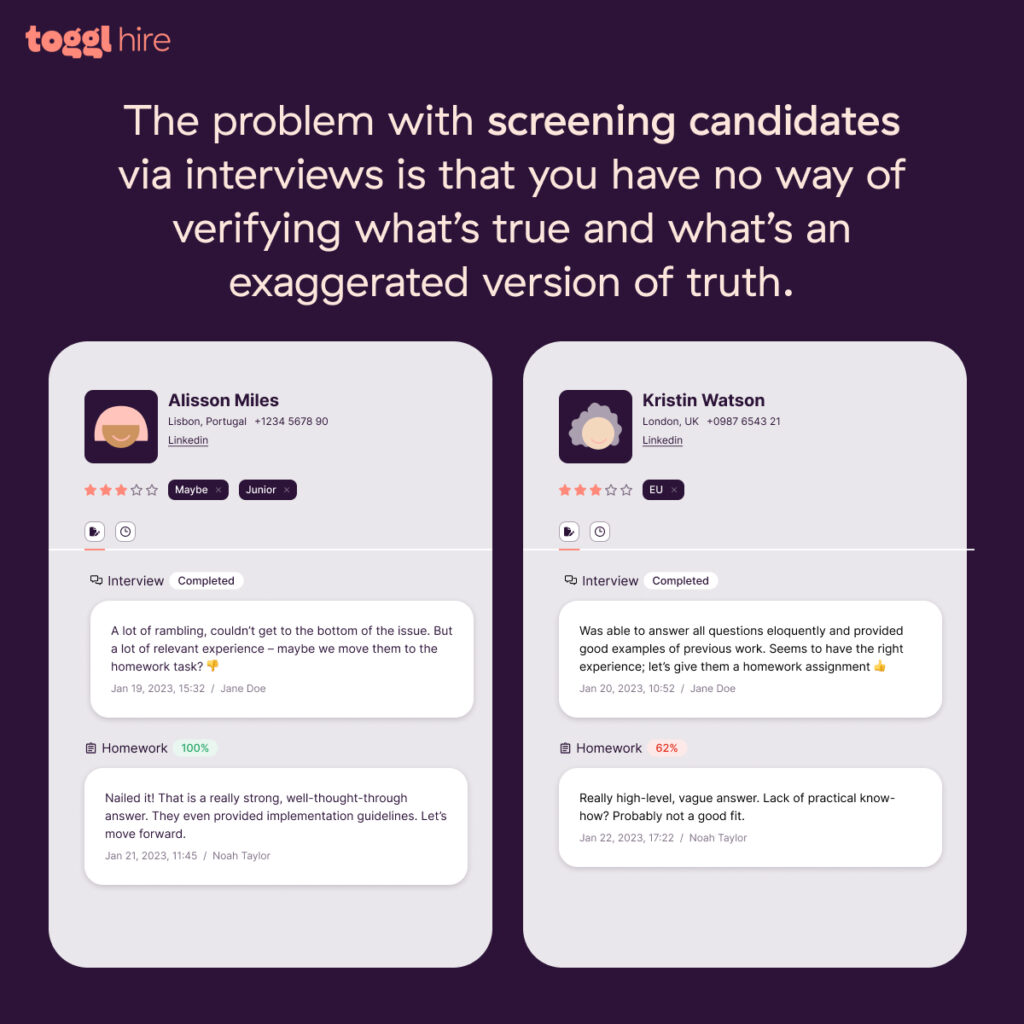
One tip for finding a qualified candidate with this process is to let them set their own deadline for the take-at-home task and see if they stick to it.
#11 – Do live portfolio reviews with the candidate by your side
This is not always an option, but another way to evaluate interview candidates is by discussing their work samples together.
You can review their experience, achievements, and past projects to get a better understanding of their skill level. This is a popular evaluation method for roles that are tricky to assess, like Design or Writing. It can also be a viable alternative to take-home tasks if candidates aren’t willing to take on unpaid test projects.
#12 – Evaluate key soft skills along with technical skills
You can do this type of candidate evaluation with behavioral interview questions or by doing soft skills tests with your job seekers.
If you have multiple candidates who did great with technical skills and their job interview, testing for soft skills can help you rank candidates more easily.
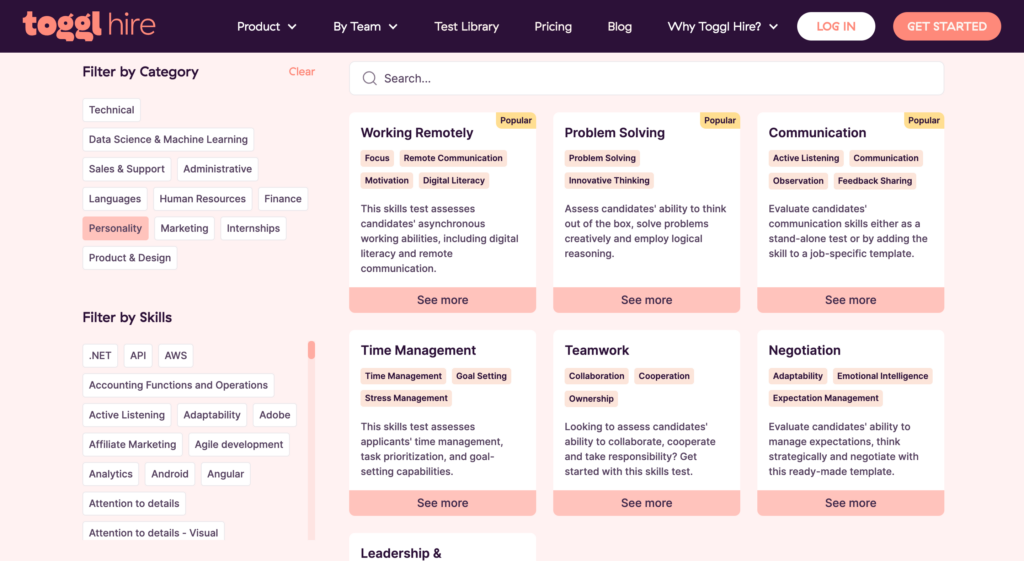
Evaluate candidates for organizational fit in the hiring process
It’s no use if someone is amazing as a candidate if they do not fit in with the rest of your team.
Luckily, you can also assess candidates for organizational and cultural fit.
#13 – Introduce peer interviews
These are interviews when multiple interviewers outside of your hiring team (usually the potential manager and coworkers) get to talk to the candidate and see if they’re a mutual fit.
Before setting up one of these interviews, make sure the team gets specialized training on the interview questions and goals.
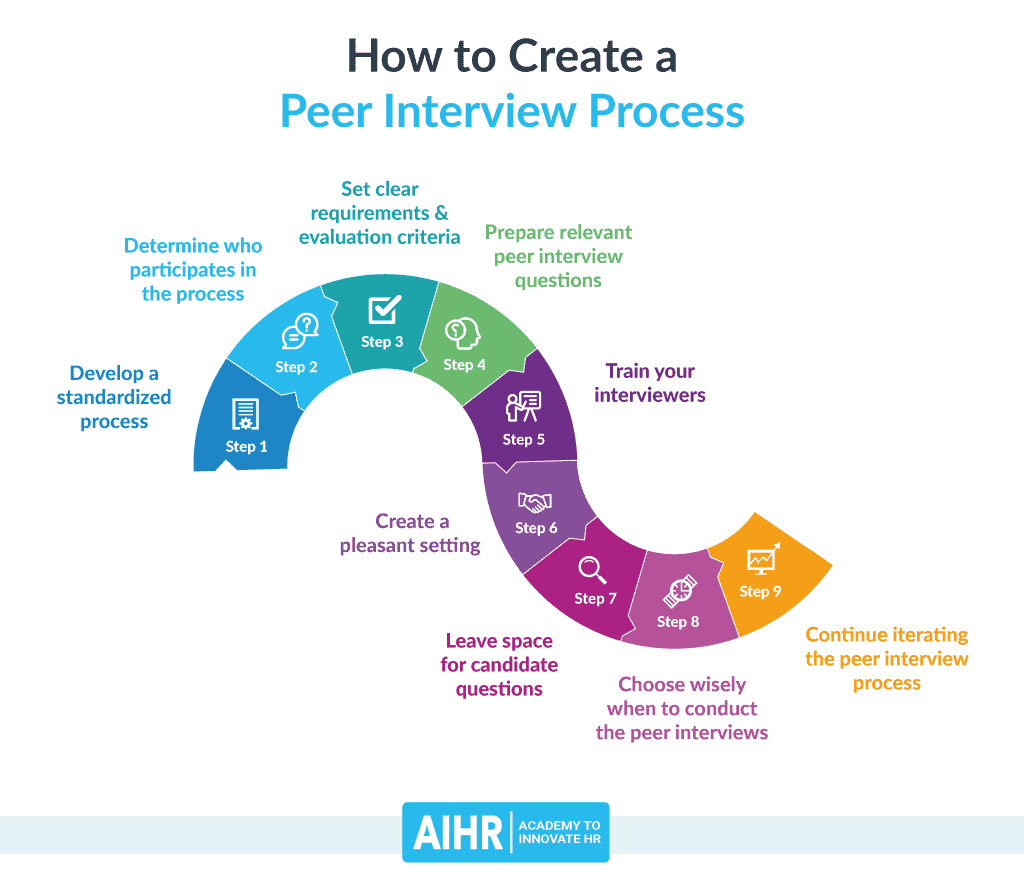
#14 – Run a trial period with the very best candidate
In the case of Toggl Hire, when we find an amazing person (or several), we give them 3 days to work alongside us to see if we’re a good match.
On average, one out of five of these trial projects turns into a successful new hire. Simulating the work environment helps to filter out candidates who don’t have critical soft skills (like communication or working independently) or don’t find alignment with key team members.
#15 – Run a cultural add interview
As opposed to cultural fit, cultural add means looking for something that your current company is missing.
Upgraded company values, amazing soft skills, out-of-the-box thinking – you name it. Don’t be afraid to compare candidates and hire someone who brings something new and beneficial to your team.
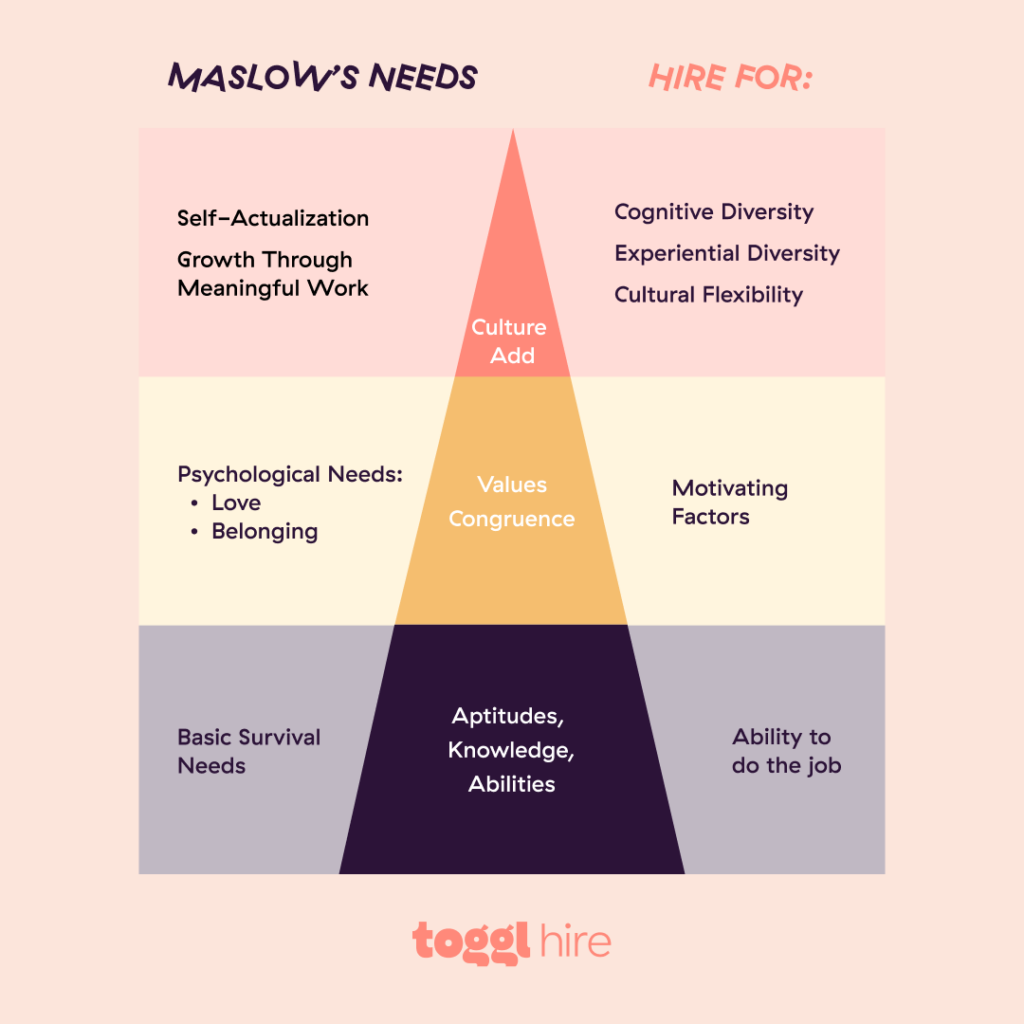
Final thoughts on evaluating job candidates
There are many ways to evaluate candidates and a wide variety of hiring tools, processes, and options to test for skills and experience, making candidate evaluation easier than ever before.
To help you determine if the potential candidate has what it takes to do the job, try Toggl Hire’s skills tests.
With a rich library of soft and hard skills tests, you can base your candidate evaluation on solid proof rather than second guesses or gut feelings. Sign up today to get started!
Juste loves investigating through writing. A copywriter by trade, she spent the last ten years in startups, telling stories and building marketing teams. She works at Toggl Hire and writes about how businesses can recruit really great people.





